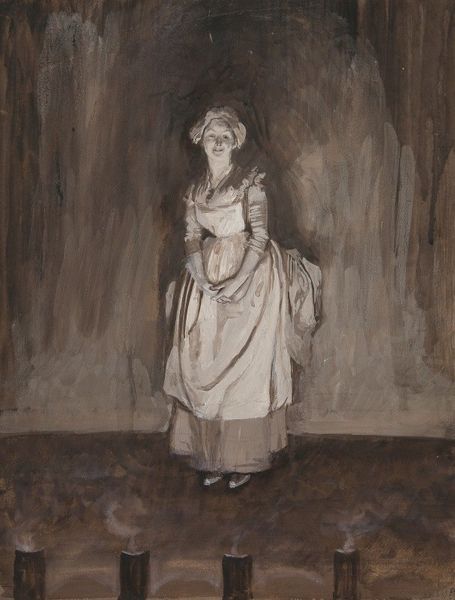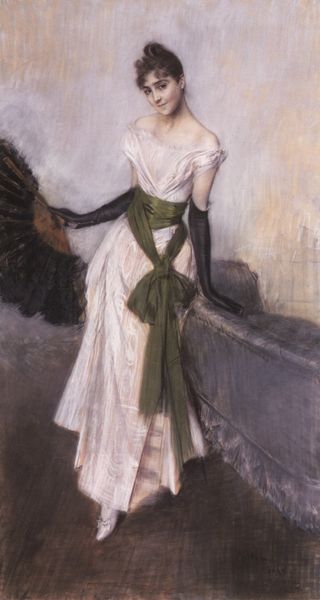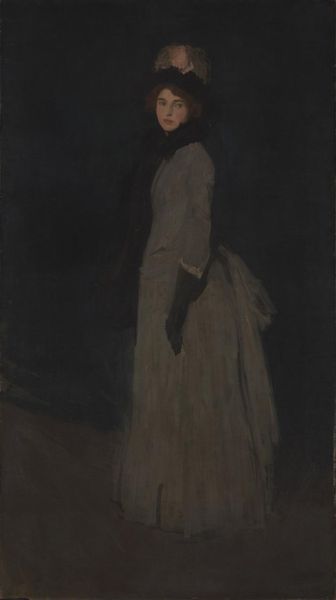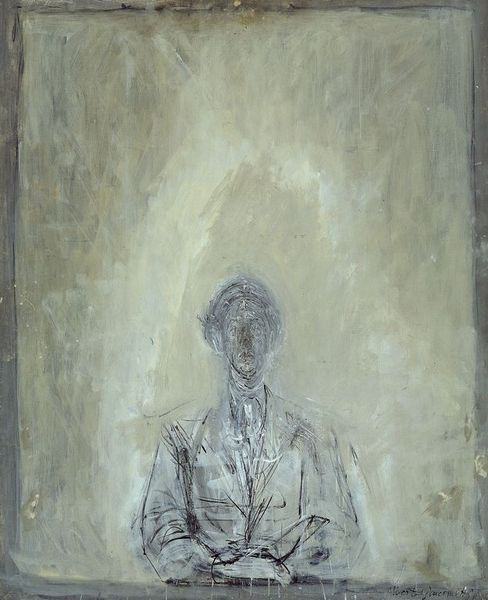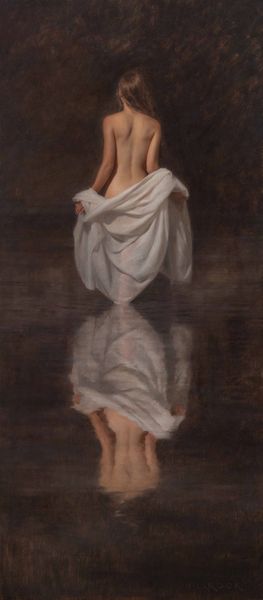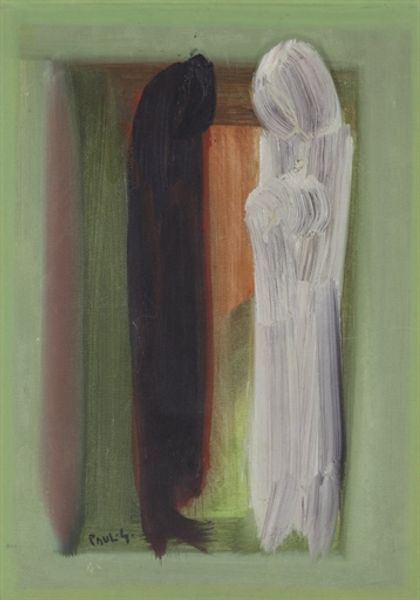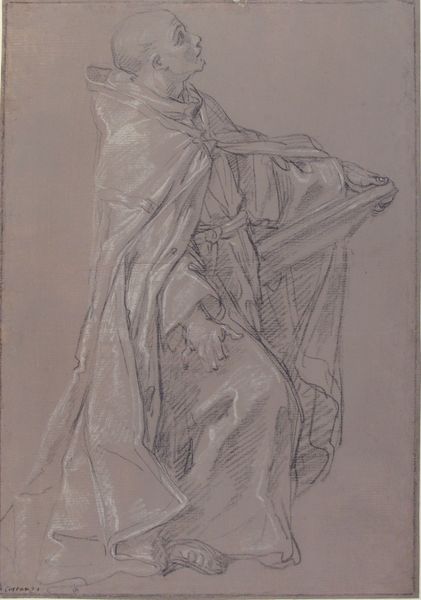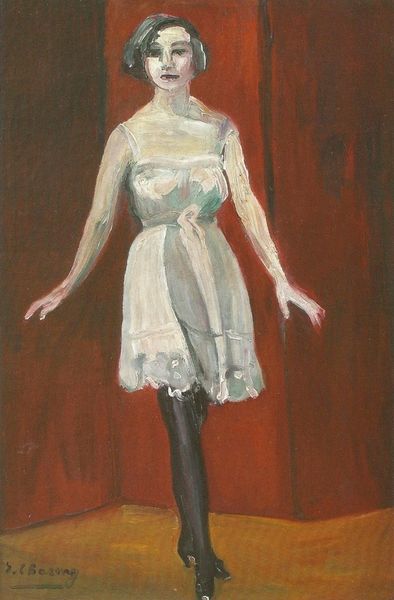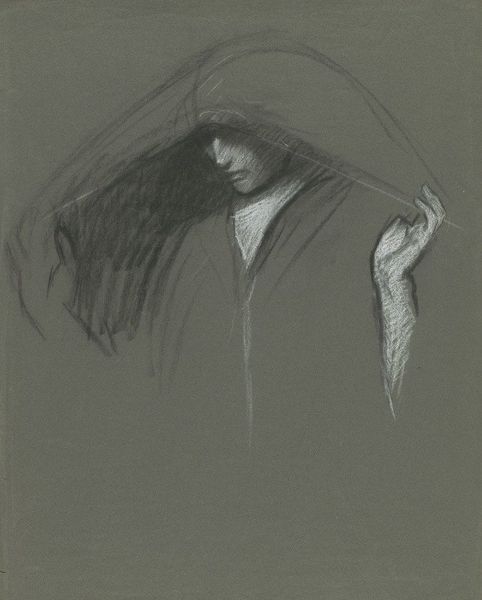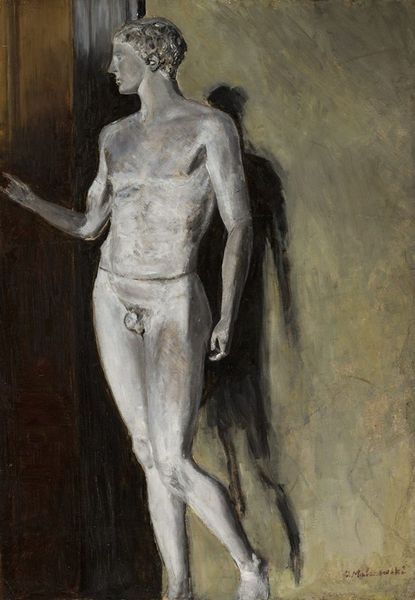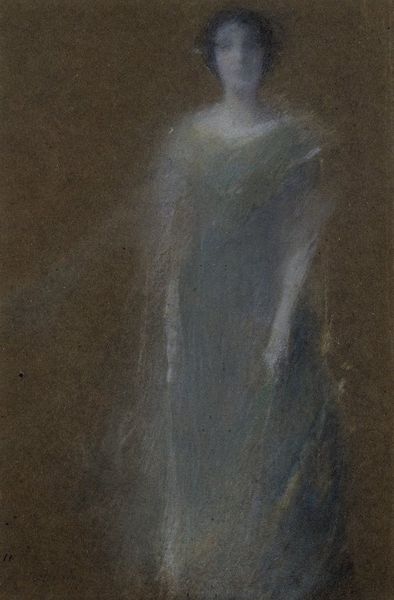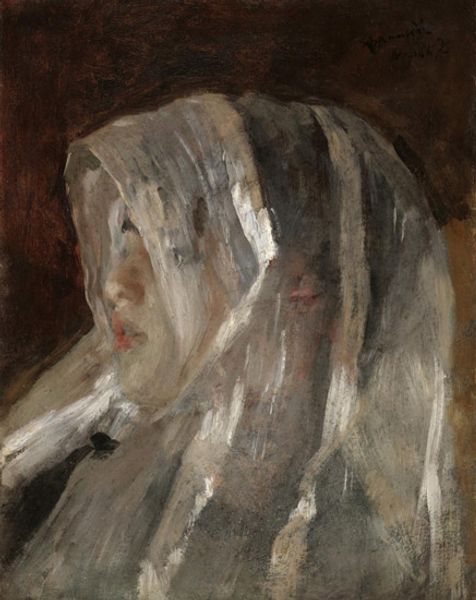
drawing, watercolor
#
portrait
#
drawing
#
narrative-art
#
charcoal drawing
#
figuration
#
watercolor
#
portrait drawing
#
academic-art
Copyright: Public Domain: Artvee
Editor: This is Edwin Austin Abbey's "Study for Blanchefleur," made in 1993 using drawing and watercolor techniques. The monochromatic palette creates a somber, almost ethereal mood. How would you approach understanding this piece? Curator: I'm drawn to the materials and the labor embedded within this preparatory sketch. The blending of watercolor and drawing - academic techniques here pushed into service of a larger narrative – tells a story of production. How do these material choices and methods influence the portrayal, do you think? Editor: It’s interesting that you focus on the materials themselves. I see how the fluidity of watercolor contributes to the flowing drapery, almost ghostlike, hinting at an unreal, idealized depiction of the subject. Do you think the academic style emphasizes this effect? Curator: Precisely. Academic art often idealizes. Now, consider the Victorian context. Mass production shaped everyday aesthetics. Are we looking at a yearning for pre-industrial values embedded within the labor and methods displayed? Could the artist be consciously reacting to the increasingly industrialized landscape through a medieval subject matter? Editor: That's fascinating! So you are saying, perhaps Abbey uses these traditional art-making methods as a social commentary on Victorian industrialization by embracing craftsmanship and artistic skill against mass production? Curator: It's worth considering. Also, consider the socio-economic implications: who had access to watercolor, to charcoal, to art education in general? What social strata do these materials represent? Editor: Wow, I never would have thought about that. Focusing on these material aspects really opens up the conversation! I can see that examining the means of production challenges assumptions about artistic creation. Curator: Indeed! It helps us move beyond simply aesthetic appreciation towards a deeper understanding of the socio-historical context and challenges established hierarchies of value in art.
Comments
No comments
Be the first to comment and join the conversation on the ultimate creative platform.
